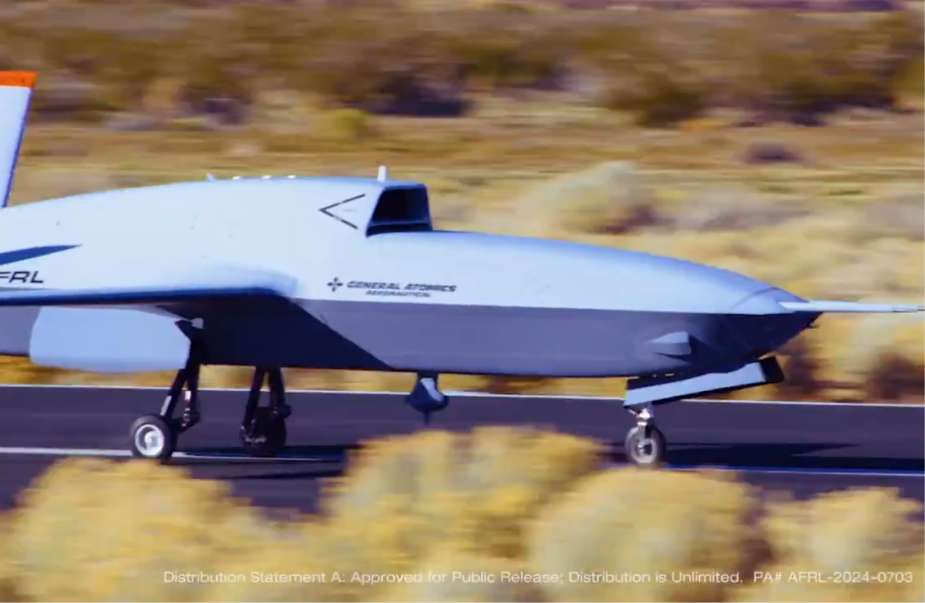Breaking news
General Atomics unveils XQ-67A sensing drone for US Air Force.
General Atomics Aeronautical Systems Inc. (GA-ASI) has unveiled its new unmanned aerial vehicle, the XQ-67A, specifically designed for the US Air Force Research Laboratory's Off-Board Sensing Station (OBSS) program. This program, shrouded in secrecy, aims to deploy drones capable of guiding fighter jets and transmitting essential information on targets and threats to pilots.
Follow Air Recognition on Google News at this link
 GA-ASI shared images and videos showing the XQ-67A performing high-speed taxi tests. (Picture source: GA-ASI)
GA-ASI shared images and videos showing the XQ-67A performing high-speed taxi tests. (Picture source: GA-ASI)
On February 8, 2024, GA-ASI shared images and videos showing the XQ-67A performing high-speed taxi tests, thereby preparing for its inaugural flight. Although it has not yet been confirmed whether the drone has flown, the US Air Force had planned for a first flight within the first six months of the fiscal year 2024.
C. Mark Brinkley, spokesperson for GA-ASI, emphasized the revolutionary aspect of the XQ-67A in the field of unmanned combat air systems. He highlighted the methodical approach adopted to progress through the phases of the OBSS project in collaboration with government partners, focusing on rapid development, accelerated design, and the delivery of effective combat capabilities.
The OBSS program, initiated in 2021, originally awarded contracts to GA-ASI and Kratos, with the latter being phased out in 2023. The objectives of the program, although not fully disclosed, appear to focus on the deployment of drones equipped with advanced sensors. These drones would operate ahead of combat jets, collecting and relaying critical data on targets and threats. It is reported that the XQ-67A will be remotely piloted.
The US Air Force's exploration of unmanned capabilities is not limited to the XQ-67A. Tests have also included Kratos's XQ-58A Valkyrie and Boeing's MQ-28 Ghost Bat, the latter having been imported from an Australian development project for further testing in the United States.
Alongside the OBSS program, the US Air Force's Collaborative Combat Aircraft (CCA) initiative envisions a fleet of drones fulfilling multiple roles: missile carriers, sensing units, electronic warfare platforms, and decoys to draw enemy fire. These drones are expected to bolster the US Air Force's capabilities by providing an economical solution to enhance its aging fleet, aiming to counter the numerical superiority of adversaries such as China.


























